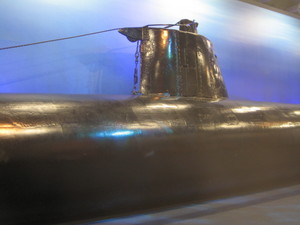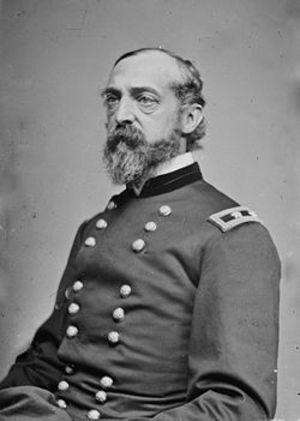The American Civil War saw innovation in naval warfare like no other war before it. In the face of an ever tightening blockade and loss of ports due to advances by the Union Army, the Confederate States were forced to be innovative in their efforts to break the blockade. One of the most effective an innovative efforts that the Confederate Navy developed was that of submarines.
The most famous of the Confederate submarines is the CSS H. L. Hunley. The CSS H. L. Hunley was designed by Horace L. Hunley and the machinists of the Singer Submarine Corps of Mobile, Alabama. Through the use of cylindrical boilers, the submarine was constructed and given a screw propeller that was powered by seven men who turned the crank on the propeller shaft. The submarine was steered by an officer who stood in a conning tower in the front of the ship. For armament, a 90 pound black powder spar torpedo was fitted to the front of the ship.
The ship was tested in the waters of Mobile Bay in Alabama. In the process of the testing, the ship sank twice. The first was at her moorings when it was swamped by a rogue wave and sank killing 5 of the ship’s crewmen. The second time was on October 15, 1863, during diving trials. In the second sinking the ship’s chief designer, Horace L. Hunley died. In spite of sinking twice, the ship was raised and refitted. This was due to the dire need of the Confederate States to break the strangling blockade that the US Navy had off of its coast.
The third set of tests for the ship proved to be successful. This brought the ship to the notice of Charleston’s commander, General P. G. T. Beauregard. General Beauregard upon hearing of the ship asked the Confederate Navy to have it shipped to Charleston in an effort to help break the blockade of that port.
On the night of February 17, 1864, the CSS H. L. Hunley was readied for its mission that would forever place its name in the history books. The submarine moved up on the USS Housatonic and placed its spar torpedo into the side of the US Navy ship before the crew realized the submarine was attacking it. When the USS Housatonic’s crew finally realized they were under attack they engaged the ship’s engines to get away from the CSS H. L. Hunley but it was too late. The charge from the Confederate submarine was detonated and sank the USS Housatonic. In the ensuing wake that was caused by the sinking of the USS Housatonic, the submarine was pulled under the water and sank as well.
The exact ending of the CSS H. L. Hunley was unknown for 131 years. Finally in May of 1995, an underwater archeology expedition led by author Clive Cussler found the ship on the bottom of Charleston harbor. On August 8, 2000, the ship was raised and is now sitting at the former Charleston Navy Base in a conservation facility being restored. The crew of the CSS H. L. Hunley was given a proper military burial by Civil War reenactors a few months later. The legacy of the Confederate submarine has been felt by navies around the world since proving that a submarine could successfully sink a surface ship. The actions of the CSS H. L. Hunley directly led to the development of famous submarines like the German U-Boats of World War 1 and World War 2.
Sources
“Submarine H. L. Hunley (1863-1864)”, Department of the Navy – Naval Historical Center
The Civil War and Charleston”, Friends of the Hunley
“H. L. Hunley”, Historic Naval Ships Association


